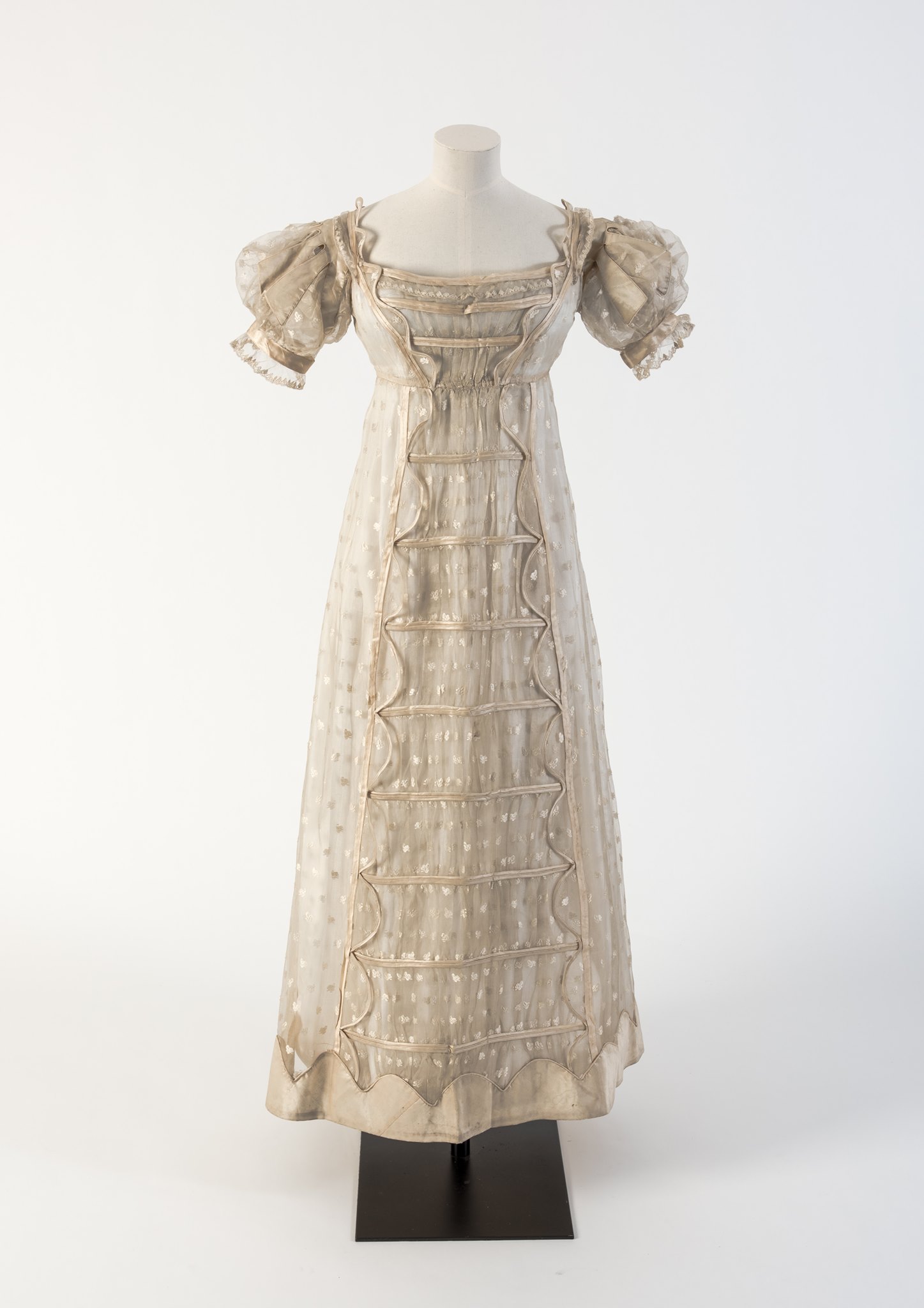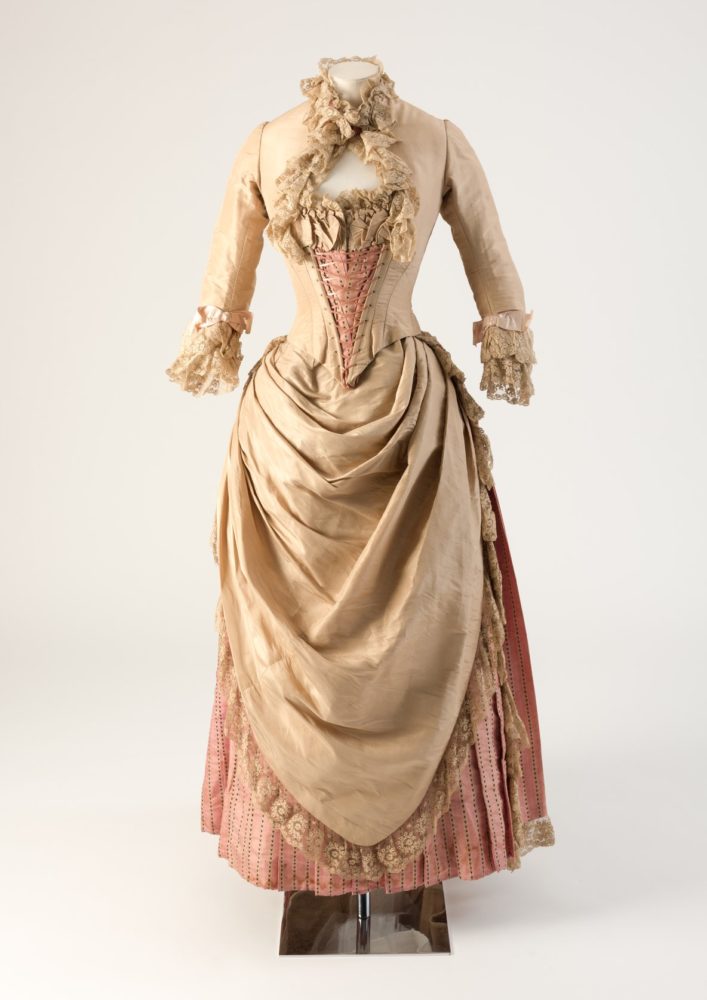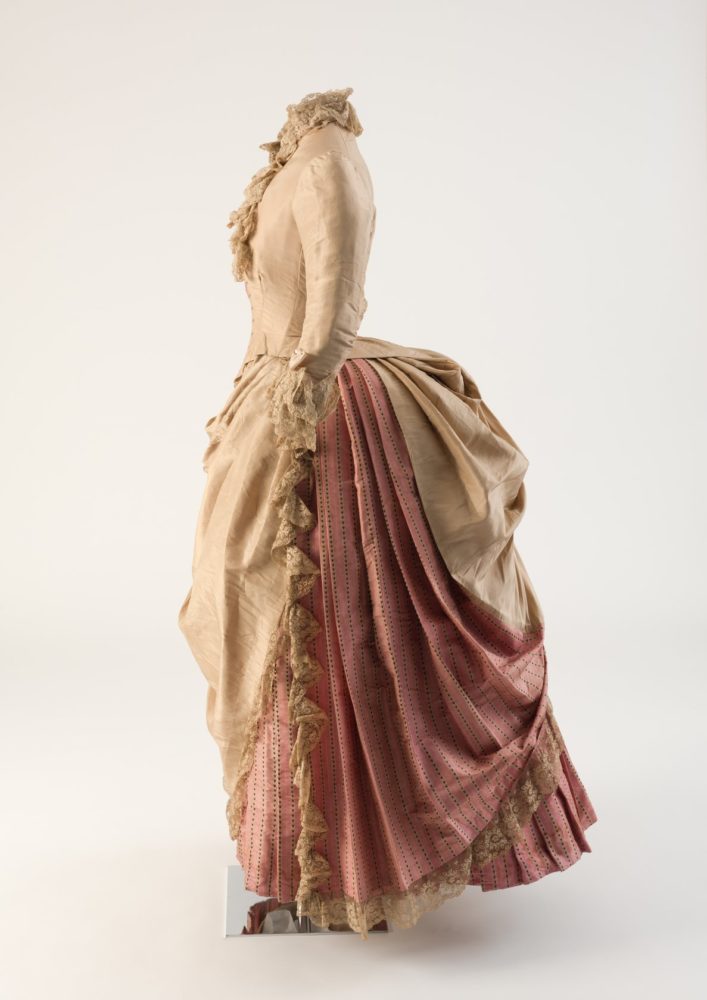This week I’ve picked a Rate the Dress that includes some of the romantic historicism of last week, and some very new technology as well.
How will it fare in comparison?
Last Week: an 1870s dress with 18th century inspiration
Ratings on last week’s dress were quite divided: a solid grouping of 8-10 scores, and then another cluster of 5-6 scores.
Interestingly, raters who I recognise as usually anti-frou-frou were quite willing to like this one, whereas some of you who are generally more positive of the extremely-sweet weren’t so keen on this one. So a dress to subvert usual reactions…
The Total: 7.7 out of 10
Although it’s hardly a stellar rating, and not many of you commented, I was extremely pleased with last week’s Rating. As at ratings closing time it totalled 100.5. So close to perfectly round!
This week: an 1810s dress with spotted lace and scalloped trim
This week’s Rate the dress blends historicism with a robust appreciation for the latest trends, and the latest technology.

Evening dress, 1817, patterned silk gauze called ‘Madras lace’ with silk satin trim, Fashion Museum Bath
The puffed sleeves of this dress definitely owe at least part of their design to the Renaissance inspiration so common in the late 1810s. The standing frill of scalloped edging nods at an Elizabethan ruff.
At the same time, the scalloped hem, scalloped front border, and double rows of satin cording holding the ruched front panel in place, are all very a la mode for the late 1810s, while also hinting at the 15th century.
And finally, the dress fully embraces new technology in its materials choice. It’s made from ‘Madras lace’, a new patterned gauze weave made possible by the invention of a loom that could weave lace-like net fabrics in 1809.

Evening dress, 1817, patterned silk gauze called ‘Madras lace’ with silk satin trim, Fashion Museum Bath
What do you think? Does the decadent combination of old and new, satin shine and lace froth, appeal aesthetically?
Rate the Dress on a Scale of 1 to 10
A reminder about rating — feel free to be critical if you don’t like a thing, but make sure that your comments aren’t actually insulting to those who do like a garment. Phrase criticism as your opinion, rather than a flat fact. Our different tastes are what make Rate the Dress so interesting. It’s no fun when a comment implies that anyone who doesn’t agree with it, or who would wear a garment, is totally lacking in taste.
As usual, nothing more complicated than a .5. I also hugely appreciate it if you only do one rating, and set it on a line at the very end of your comment.





